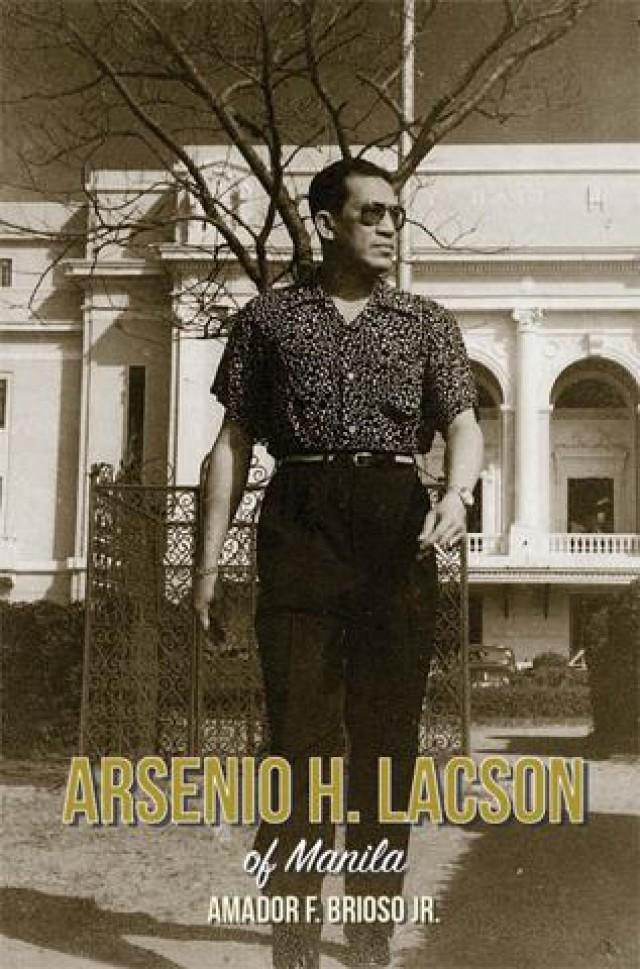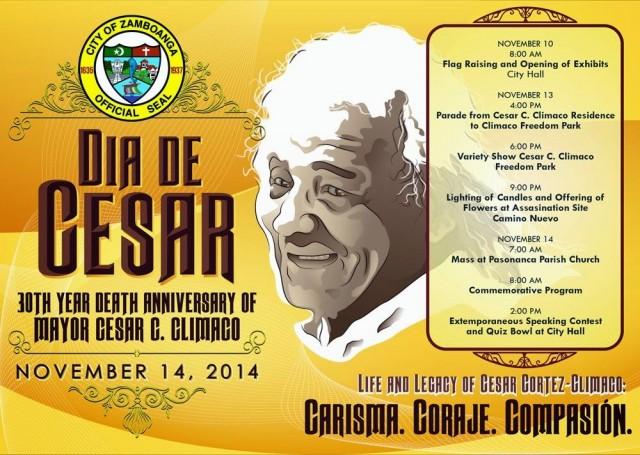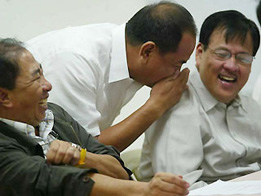Cool, great mayors in history
Rodrigo Roa Duterte is the first mayor in recent history to leap frog from serving the city to holding the highest position in the land... although technically Emilio Aguinaldo is the first captain municipal to be president of the Philippines.
Cool.
To commemorate the first anniversary of his inauguration, let us look back and learn about some other cool mayors in Philippine History!
Arsenio H. Lacson: The greatest Manila mayor
A little trivia first. Did you know that journalists from New York call their mayor “hizzoner,” from the title “His Honor”?
For many, Manila’s greatest "hizzoner" would no doubt be Arsenio H. Lacson, who was often compared during his time to New York’s greatest mayor Fiorello La Guardia. Yes, it was during his time that the Lacson Underpass was built, and it was to his honor that Lacson Avenue in Manila was named.
Nicknamed “Nene”, Lacson was born in 1912 in Talisay, Negros Occidental. Despite being sickly, he became active in different sports. He was a member of the Ateneo basketball midgets team and he also played football, baseball, track and field and fencing. He even acted for the Ateneo Theater’s Guild. But it was while playing boxing that he broke his nose and this became part of his famous profile.

He finished BA Journalism in Ateneo de Manila and finished Law in the University of Sto. Tomas.
His life only became more colorful: He married Luchi Santiago Lacson, daughter of a former acting mayor of Manila. He fought the Japanese during World War II. He became a radio broadcaster and was known for his program "In This Corner" — in direct reference to one of his sports, boxing.
But yeah, fight like a boxer he did against the corrupt. He became known as “Arsenic” — a good man with an acid tongue. Because of this, he was elected a representative of the second district of Manila under the Nacionalista Party in 1949 and was honored by the Philippines Free Press as one of the 10 Most Useful Congressmen.
He not only become the first elected mayor of the City of Manila in 1951, he was the first one to be elected for three terms. He continued attacking even presidents coming from his own party in his radio show. A broadcaster mayor — just like Digong Duterte.
He was once suspended by President Elpidio Quirino after a libel case was filed against him by a judge he attacked on air. Fortunately (for Lacson), the case was nullified by the Supreme Court.
Amador F. Brioso Jr. in his book "Arsenio H. Lacson of Manila" listed a number of Lacson’s achievements for Manila: He paid Manila’s big debt by strict collection of taxes; streamlined city government operations by taking out 600 corrupt employees and then doubling the salaries for employees at City Hall; and he displaced corrupt policemen and evicted informal settlers in Malate.
He believed that sidewalks are for people, so he took vendors out of the sidewalk and established a public market for them. Aside from creating a 6-car patrol unit to man the city, he himself does patrolling at night. He had Manila Zoo built and oversaw the construction of the first underpass in Quiapo, which would later be named after him.
When Hollywood star Charlton Heston did not come on time for a courtesy call with the mayor, Lacson left the scene. Yet, he still invited Heston for a dinner to his house and it appears that it was the Hollywood star who became awe-inspired by the mayor.
Lacson could have been the first mayor to become president of the Philippines — he was a favorite for the 1965 elections. History would have taken an entirely different course for the country had he not suddenly died in 1962. A million people went to his funeral.
Apparently the rumor the he died with a famous movie star is still just that, a rumor.
The great journalist Teddy Benigno once said, “He was… honest… and of course, he had vision.”
Cesar Climaco: Zamboanga's Colorful Mayor
Mayor Lacson became friends with another mayor from Mindanao who was dubbed as “Arsenio Lacson of the South.” According to Lacson, with the rate that the Zamboanga mayor is going, he would soon be known as the “Climaco of the North.”
Cesar Cortez Climaco’s personality can be likened to the sail of the vinta which used to sail on Zamboanga’s waters — colorful.
He was born in 1916 and finished law at the University of the Philippines before World War II. While he was studying, he worked as a family driver and then as a janitor in the Court of Appeals.
After being a member of the city council, he was appointed mayor of Zamboanga in 1951. He joined Operation Brotherhood of the Jaycees, giving humanitarian aid to the victims of the Vietnam War. He also became Customs Commissioner. He tried but failed to be elected was senator or eventually a member of the Interim Batasang Pambansa.
When Martial Law was proclaimed in 1972 by his schoolmate and friend Ferdinand E. Marcos, he went to America and vowed never to cut his hair until democracy is restored (just like Macario Sakay).
He went back to the Philippines in 1976 and was elected ayor once again in 1980. Instead of vote-buying, he was known to go around Zamboanga on his motorcycle for his candy-giving activities to the kids.
The kids would sing a rhyme about him to the tune of his favorite love song for his wife, “O My Darling, Clementine”: “Ai si Cesar, ai si Cesar, ai si Cesar Climaco, maskin byeho pero macho (even if he is old but he is macho), ai si Cesar Climaco!”
In his office, he put up a sign that reads “I’m not a dirty old man, I’m a sexy senior citizen”
Despite being a Christian, he had very good relations with our Muslim brothers. He criticized the Martial Law police and military for their inability to solve crime in Zamboanga. He became so frustrated with this that he built a scorecard outside the City Hall — a public tally of unsolved crime!
He personally responded to many incidents of violence — on his motorcycle, of course — trying to scare thugs and disarming policemen who were sleeping on duty. But he refused to bring a gun or be in the presence of bodyguards.
His being a Marcos critic did not stop his friend from inviting him in Malacañang. Apparently, he is one of the rare people that can make the dictator really laugh.
But the assassination of another friend, Ninoy Aquino, enraged Climaco. He made a bas relief monument of Ninoy’s face with the inscription that says that he was assassinated "while under complete and total custody of the military security forces whose commander in chief is President Ferdinand E. Marcos, Son of Batac (SOB)."

On 14 November 1984, before responding to a fire, he jokingly told someone in the funeral parlor to reserve one of the coffins for him. As he was leaving the fire scene about to ride his motorcycle, he was shot.
He died serving his people, and the people buried him as a hero.
Jesse Manalastas Robredo: Proud Nagueño Democrat
Ateneo de Zamboanga University awarded the Mayor Cesar Climaco Award of 2008 to one Naga mayor for his “new brand of leadership that privileges accountability, transparency, effective city management and governance.” But this was not his first major award.
He had already been a recipient of Asia’s Highest Prize, the Ramon Magsaysay Award for Government Service, in 2000 for “giving credence to the promise of democracy by demonstrating that effective city management is compatible with yielding power to the people.”

Jesse Robredo was a real native of Naga City, born there in 1958.
He was both an excellent student and chess player, competing to represent Naga Parochial School. He studied high school in Ateneo de Naga and graduated double major Mechanical Engineering and Industrial Management Engineering at the De La Salle University. He worked in Magnolia, then he studied MBA at the University of the Philippines.
Even while working in an executive position at Danding Cojuangco’s San Miguel Corporation, he became active in the People Power movement and this inspired him to go back to Naga to serve his fellow Bicolanos.
He headed the Bicol River Basin Development Program in Naga and in 1988, he ran for mayor and won only by a slim margin of 947 votes. At the time, he was only 29.
Naga in 1989 had much traffic, too many informal settlers, and lacking of jobs. Naga’s revenues plummeted so low that it became a third class city when it was once a first class one.
When Jesse took over, he stamped out nepotism and introduced a merit-based hiring system in the City Hall. He eventually made it graft-free which encouraged local and foreign businesses to invest in Naga. He also encouraged the city employees to be productive in thinking of good projects through cash incentives.
He closed down night clubs, gambling joints and drug dens. He placed the transport terminals outside the city center, easing the traffic but also facilitating businesses in the city periphery. He set-up training for skills upgrade.
He was both tough and kind at the same time.
He applied the principles of business administration to governance. With his partnership with the business sector, Naga regained its status in just a year as a first class city. Its public revenues rose, eventually seeing an increase of 573%.
Without bodyguards, Robredo went around playing basketball with people and sweeping the streets himself.
He provided basic services like water systems, farm-to-market roads, day care centers in 27 districts, five high schools, and a public hospital. He launched projects for different sectors, especially the marginalized, with the help of his wife, Atty. Leni Robredo.
With his Kaantabay sa Kauswagan (Partners in Development) program, over 4,500 homeless families were relocated, complete with livelihood opportunities and basic services.
After being re-elected unopposed in 1995, he urged the City Council to adapt an Empowerment Ordinance, which allowed different sectors of the civil society to participate in the deliberations of the council. His leadership was consultative and more democratic, yet more effective and attuned to the needs of the people.
The citation for his Magsaysay award says it all: “Democratic government is not necessarily good government… [but] as mayor of Naga City from 1988 to 1998 [Robredo] demonstrated that democratic government can also be good government.”
He was known to go around the city wearing his favorite local sandals or tsinelas, hence the "tsinelas leadership."
In 1999, Naga City was recognized by Asiaweek Magazine as one of Asia’s improved cities.
He also became an Edward Mason Fellow in 1999 and he obtained his Masters of Public Administration degree from Harvard University's John F. Kennedy School of Government.
Robredo served Naga for six terms from 1988 to 1998 and from 2001 to 2010. In 2010, he was appointed Secretary of Interior and Local Government by President Benigno S. Aquino, III. He died in a plane crash on August 18, 2012. — AT, GMA News
Prof. Michael Charleston “Xiao” Briones Chua is currently assistant professorial lecturer of the History Department of the De La Salle University Manila. He is also a historian and was consultant to the GMA News TV series “Katipunan” and “Ilustrado.”




